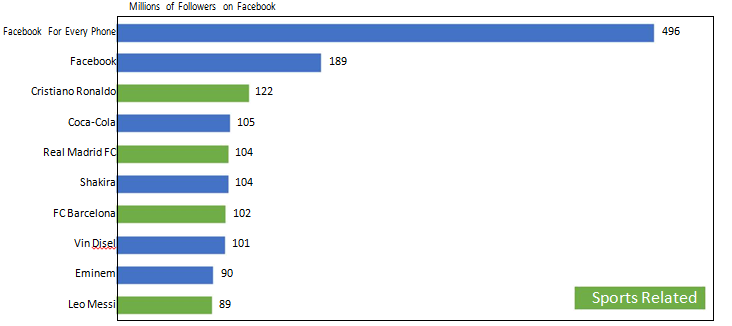What can social media teach us about our digital fans?
September 26, 2017
Never has the world of sports been as global as it is today. Through the connectivity brought by the internet and the expansion of mass media, local clubs became international brands.
Today, it is social networks that are further connecting those fans across the world, allowing them to express their opinions in a social context. While rights holders don’t control what fans post on social networks, it has become an integral part of the fan experience with direct impact on fan loyalty and engagement.
It is therefore critical to understand, influence and react to what is said in social networks.
Social networks have been around more a little more than a decade, yet they have revolutionised almost every industry. Facebook’s community reached 2 billion monthly users this year, there are 1.5 billion people watching YouTube’s videos every month, and WeChat is edging closer to the 1 billion mark with most of its users concentrated in China alone.
To put this into perspective, there are more people interacting in social media every month than the top `three most populated countries in the world combined, all concentrated in just a handful of platforms1.
Social Networks Monthly Users2

Facebook continues to be the dominant platform for sport fans. Pivot Sport’s estimates that about half of football fans use only one network when following their favourite athletes, and it is often Facebook.
Furthermore, around a fifth of fans only follow their favourite athlete, with the rest following a variety of stars across several platforms. It is therefore important to understand what is happening in all the main platforms.
Through social media channels; it has become possible to follow content posted by clubs and its stars, while interacting with more fellow fans or rival’s fans worldwide. Different types of content can be enjoyed, giving a more intimate perspective posted by athletes and events.
As a result, sports fans have become one of the most recurrent consumers of content on social media. This is reflected in the fact that Cristiano Ronaldo is the second most followed person across all social networks. In addition, on Facebook, four out of the ten most followed pages are sports related.
Most followed Facebook Pages:

Social Media platforms caught up on this early on and have kept working to make it easy, dynamic and more entertaining for its users to interact and share their interests and opinions. From Facebook’s latest additions to reaction emoji’s, to Snapchat’s constant evolution of features of its limited time videos used to attract younger audiences, fans can increasingly express their interests in many ways. Sports fans.
While TV is still the preferred way to follow live events, the fans of Pivot Sport’s clients prefer social media to stay up to date with sport news and online content, over their own websites and apps. In terms of type of content, they also prefer videos, followed by news and photos.
Social networks are now pushing to bring more sports live content into their platforms. This year Twitter partnered with the NHL to stream part of the 2017 season and Facebook will be broadcasting live matches from the MLS as part of the Facebook Watch push for prime content. Everything indicates that their influence will continue to be very strong.
So, what can rights holders do to understand and influence these platforms? The digital nature of social media allows right holders to know more from their fans through the power of data. Everything that fans are engaging within social media platforms is meticulously recorded and this information is available to right holders in most cases. Social platforms know this and encourage all account holders to use this data and engage with their fans more and better.
Beyond the traditional scope of quantity and location, social media platforms give right holders a clearer view of the demographics of their fans and the aspects of the sports that they engage with by analysing their activity.
Through data analytics it is now possible to segment and classify fans depending on the type of content they engage with the most, the topics they like, their shared interests, and more. Data analytics is a tool that – if used efficiently – can give sport organisations an insight of how their fans behave and the type of fans they have, as well as attract more fans to their own platforms through content windowing.

The digital era has given way to a new relationship between clubs and fans. The days of assuming the interests of sports fans based on relatively small samples of people via surveys and simple metrics are over.
Social Networks have given fans a stronger voice to express their interests. It allows them to communicate with clubs and receive the fan experience they deserve. All clubs should aim to take advantage of this opportunity to understand their fans, provide them with the experience they look for, while increasing the value of its organisation.
Fans are speaking and clubs must listen, and the way to do it is through data.
Sources:
1 – #1 China 1,379,302,771, #2 India 1,281,935,911, #3 United States 26,625,791, Total = 2,987,864,473. U.S. Census Bureau
2 – Facebook now has 2 billion monthly users


